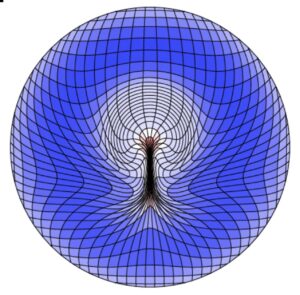Preprint
Publication Types:

Self-organized tissue mechanics underlie embryonic regulation
Early amniote development is a highly regulative and self-organized process, capable to adapt to interference through cell-cell interactions, which are widely believed to be mediated by molecules. Analyzing intact and mechanically perturbed avian embryos, we show that the mechanical forces that drive embryogenesis self-organize in an analog of Turing’s molecular reaction-diffusion model, with contractility locally self-activating and the ensuing tension acting as a long-range inhibitor. This mechanical feedback governs the persistent pattern of tissue flows that shape the embryo and steers the concomitant emergence of embryonic territories by modulating gene expression, ensuring the formation of a single embryo under normal conditions, yet allowing the emergence of multiple, well-proportioned embryos upon perturbations. Thus, mechanical forces are a central signal in embryonic self-organization, feeding back onto gene expression to canalize both patterning and morphogenesis.
